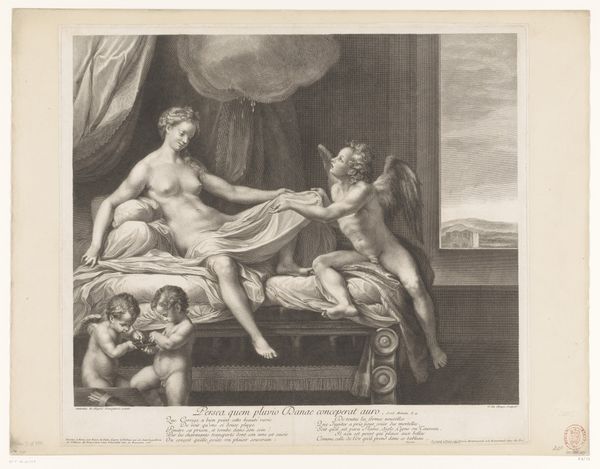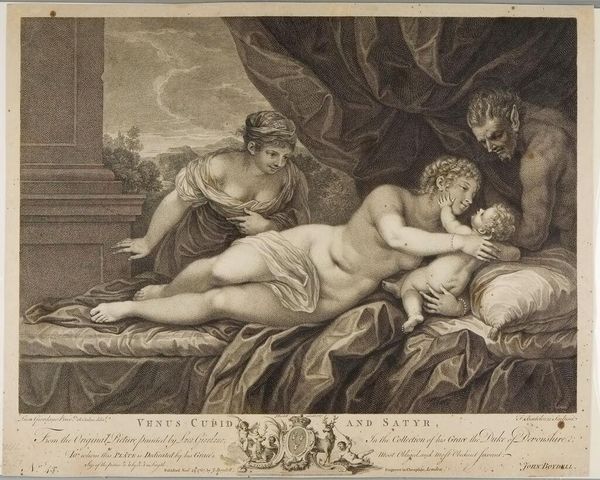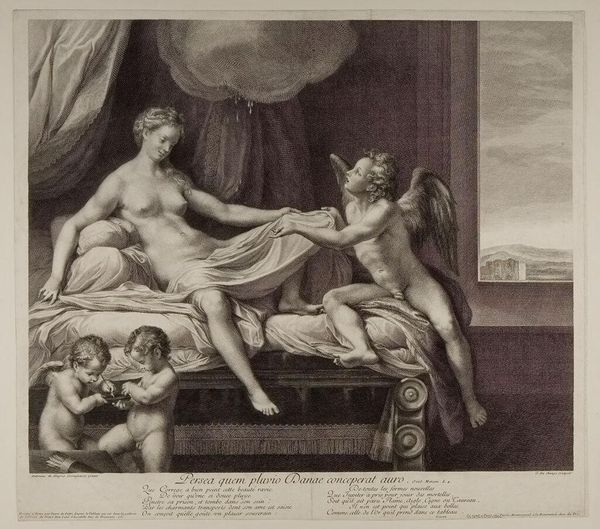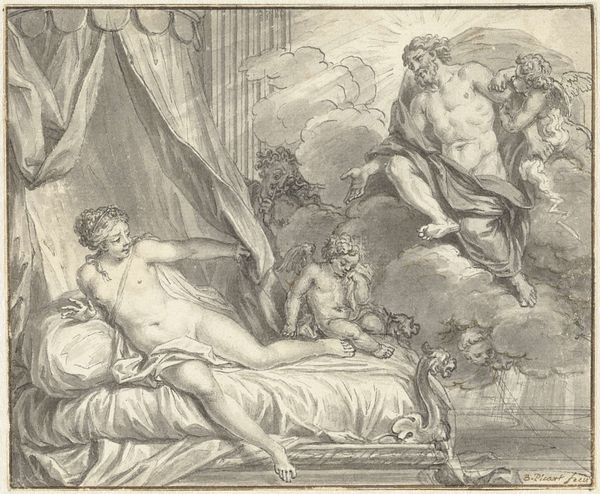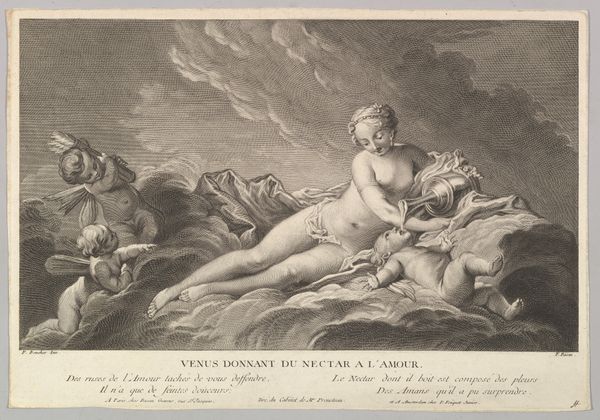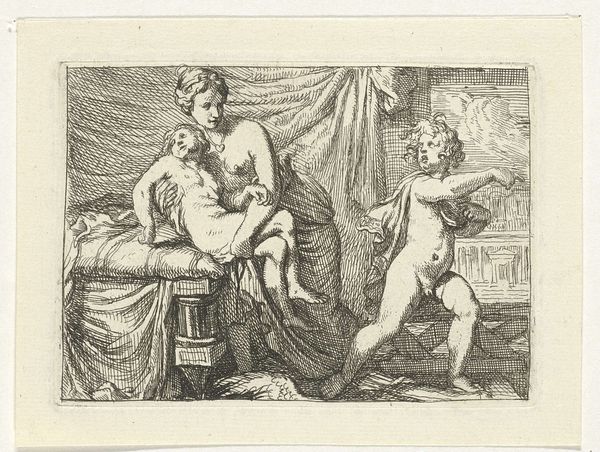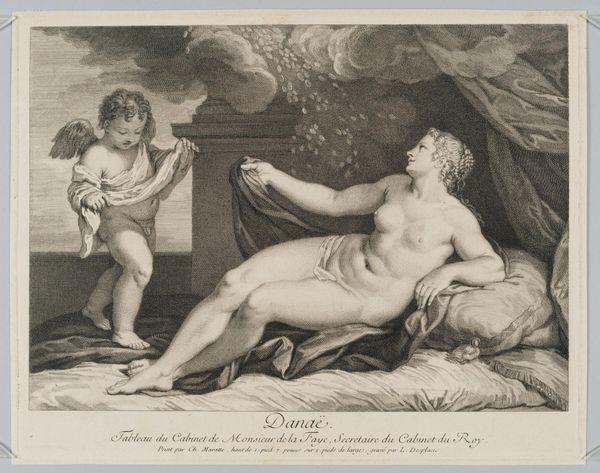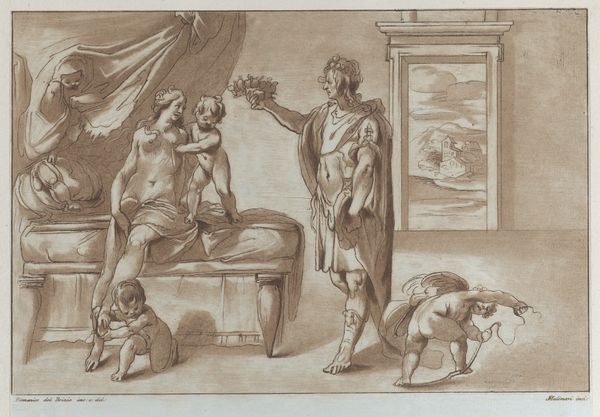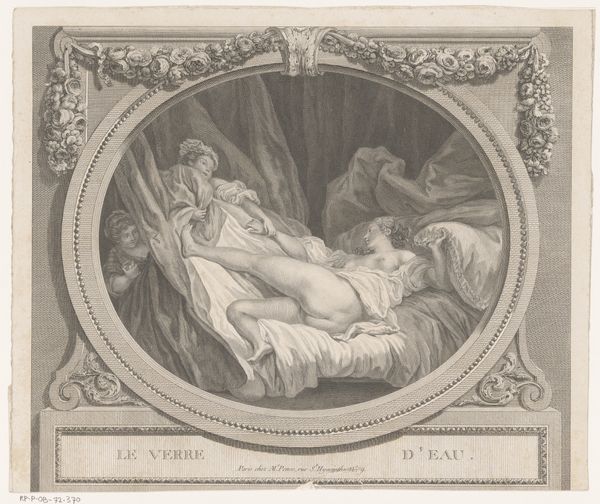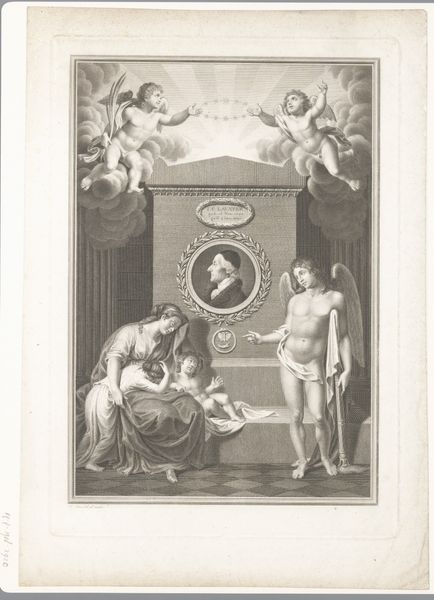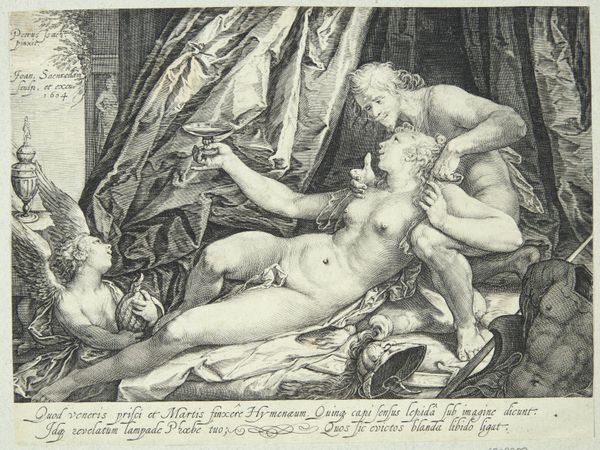
Dimensions: Image: 6 in. × 8 1/8 in. (15.2 × 20.7 cm) Sheet (Trimmed): 7 3/16 × 8 11/16 in. (18.3 × 22 cm)
Copyright: Public Domain
Editor: So, this engraving is called "Jupiter and Danae," made sometime between 1781 and 1791 by Philippe Trière. It depicts a classical scene with figures that feel, I don't know, surprisingly intimate for an allegory. What stands out to you in this piece? Curator: What immediately strikes me is the visual manifestation of power and its complex relationship with vulnerability. Look at how Danae is passively receiving Jupiter’s golden shower, literally a transaction of divine power, a golden exchange that impregnates and arguably violates her. Editor: Violates? I hadn’t thought about it that way. Curator: It’s worth considering. Is Danae truly a willing participant? Her posture suggests a degree of acquiescence, but we need to question whether true consent is even possible in a context defined by such vast power disparity. What does it mean to represent a scene where a mortal woman's body is the site of divine intervention? Editor: So, you're saying this isn't just a mythological story; it's a reflection of societal power structures? Curator: Precisely. Consider the broader historical context: Trière created this on the eve of the French Revolution. Does this portrayal of unchecked power—Jupiter's divine right—resonate with the anxieties about the aristocracy's own perceived entitlements at the time? How do you interpret the two cherubic figures on the lower left, collecting the coins? What symbolic meaning may this reveal? Editor: That’s fascinating; I see how this isn’t just about ancient myths. I guess it makes you wonder who exactly benefitted from this union. Curator: And how those benefits are distributed – then, and perhaps even now. Food for thought, wouldn't you agree?
Comments
No comments
Be the first to comment and join the conversation on the ultimate creative platform.
